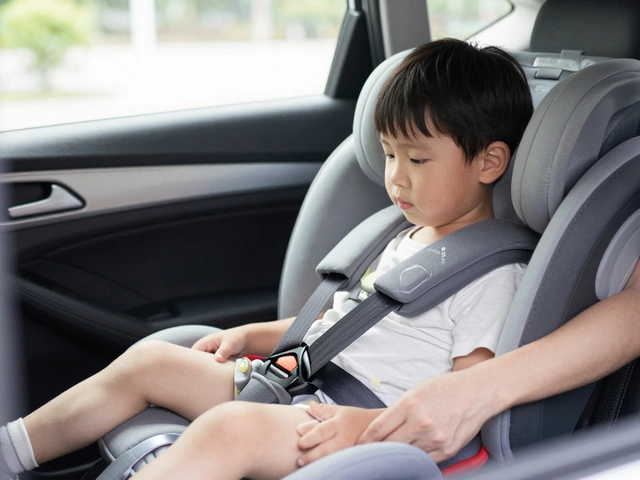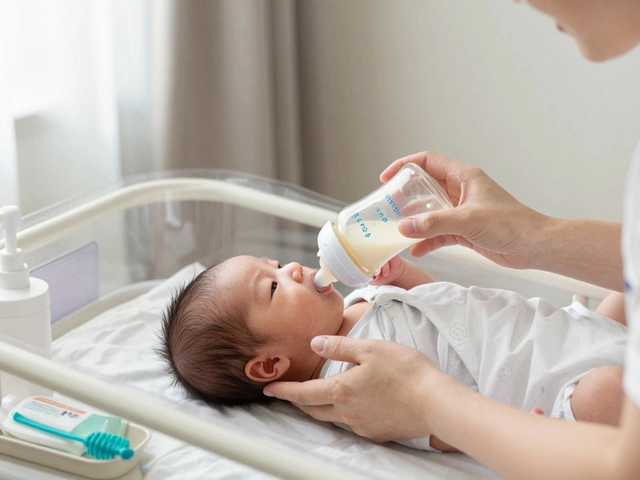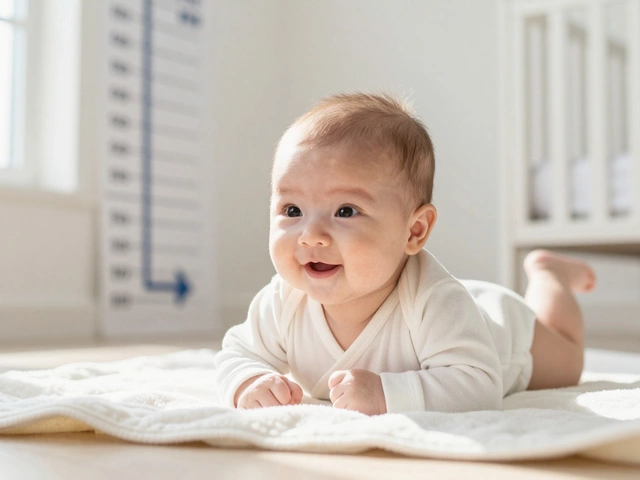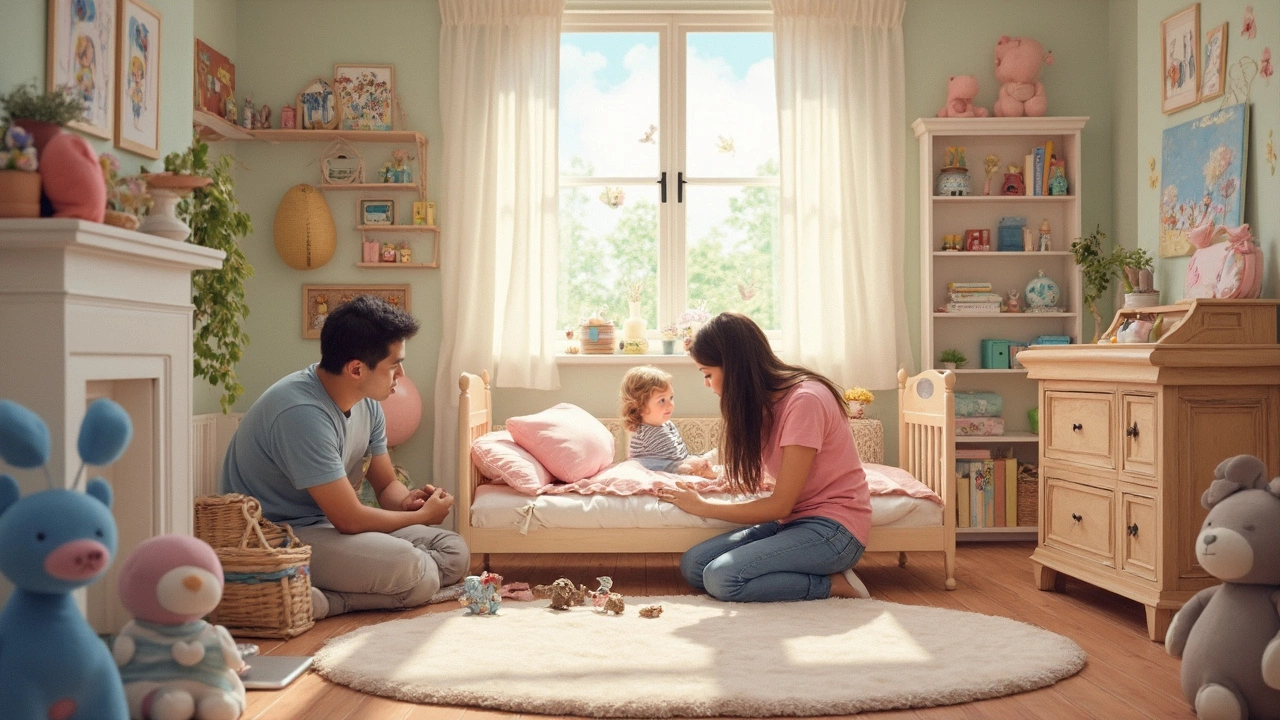
So, you've got a three-year-old and you're wondering if it's time to make the leap from a crib to a big-kid bed. It's kind of a big deal, right? For some toddlers, the crib feels cozy, like a built-in security blanket they know so well. But there comes a point when you might ask yourself: Is it time for a change?
Every kid grows at their own pace, but some common clues help nudge you in the right direction. Does your little one suddenly seem like a giant in their crib, legs sticking between the bars in some new yoga pose? That's a classic sign. Or maybe they're suddenly more adventurous, trying to climb out like an escape artist. Serious yikes there, for safety!
- Signs Your Child is Ready
- Safety and Comfort Considerations
- How to Make the Transition Smooth
- Common Challenges and Solutions
- Tips for a Great Sleep Routine
Signs Your Child is Ready
Recognizing when your toddler is ready to make the leap from a crib transition to a toddler bed is all about tuning into their behavior. It's an exciting time to support their growth while ensuring safety and comfort.
First off, if your child looks a bit like a sardine in the crib, with little room to stretch out comfortably, that's a strong signal that a change might be in order. Cribs are fantastic for infants, but as they grow, so does their need for space.
Another major sign is their newfound love for climbing. Toddlers around age three are curious and adventurous, and if they're attempting to vault over that crib railing, it's not just a safety hazard—it's a clear indicator they're ready for the next step.
- Activity Level Increased: If your toddler seems more energetic and agile, trying to climb or jump, it's a sign they're seeking freedom—even during nap time.
- Age Milestone: As kids approach 36 months, they're naturally growing. Many experts suggest the transition to a toddler bed around this age to avoid any safety concerns.
- Potty Training: Starting potty training? Moving to a toddler bed can help them get to the bathroom easily, fostering independence.
These signs aren't hard and fast rules; every child is unique. But keeping an eye on these cues can definitely help decide if it's time for the big move. Just remember, supporting your child's transition should always prioritize their safety and emotional readiness.
Safety and Comfort Considerations
Alright, let's talk about what really matters: keeping your kiddo safe and comfy during the big move from a crib to a toddler bed. The good news? With the right precautions, it can be a smooth ride for everyone involved.
First up, safety is key. If your little explorer is trying to climb out of the crib, it's definitely time to transition. A toddler bed is generally low to the floor, reducing the risk of falls, which is a huge plus! But let's not forget about baby-proofing the rest of the room. Consider using safety latches on drawers and securing heavy furniture to the walls to prevent any adventures gone wrong.
What about comfort? Making sure your child is cozy in their new bed is also crucial. You might want to keep the familiar crib mattress since switching it out can feel like just too much change at once. Plus, it's a great way to keep things familiar while they adjust.
Don't forget about bed rails. Even though toddler beds are low, adding some rails can prevent any accidental rolls onto the floor. It can make the bed feel as cozy and secure as the crib did, easing the transition.
And, of course, let's chat about safety statistics. Did you know that childproofing a room can reduce injury risk by up to 70%? That's a stat worth considering when setting up your child's new sleeping environment.
Lastly, it might help to involve your child in picking out bedding or even some cute pillows. It gives them a sense of ownership and might make them excited about their upgraded sleeping quarters.
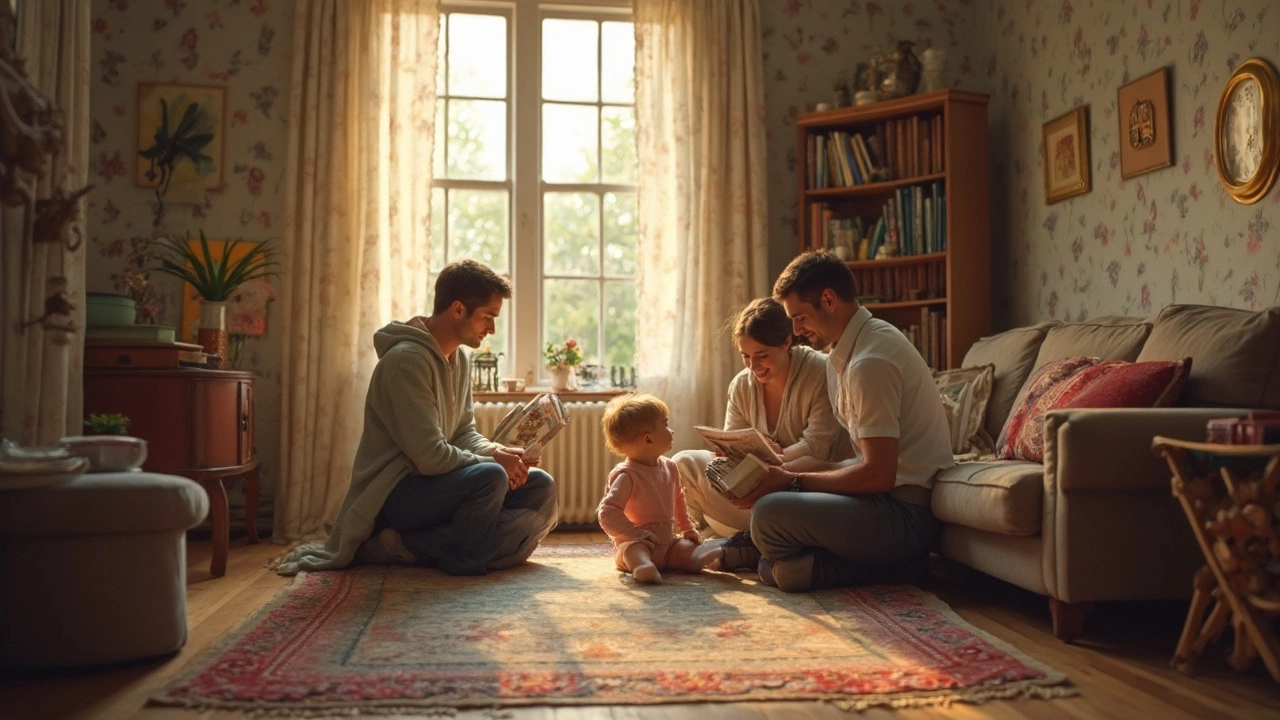
How to Make the Transition Smooth
Okay, so you've decided it's time for your little one to transition to a toddler bed. But how do you make this big change as smooth as possible? Here are some tips that can really help.
First things first, make the new bed exciting! If you can, let your child be part of the process. Take them shopping to pick out fun sheets or a cute pillow. You want them to feel this is their special place, not just another furniture piece.
Next, try to keep the bedtime routine the same. Sure, the bed is new, but familiar steps will help: brush teeth, read a book, maybe sing a quick song. Consistency can be your best friend in making the transition feel less overwhelming.
Consider starting with day naps in the new bed. It’s like a trial run without the full-night commitment. If they handle naps okay, that's a good sign they're getting comfy.
- Safety comes first: Ensure the bed is low to the ground to prevent falls.
- Use a bed rail for an extra sense of security.
- Remove potential hazards in the room that they could access now that they’re more mobile at night.
One savvy move is to keep the crib in the room for a bit, just in case. Not every change has to be cold turkey. If they can't settle in the new bed, slipping back to the crib for a nap now and then might not be the worst thing.
Lastly, be patient. It's not unusual for kids to have a bit of a hard time with changes, and that's perfectly normal. If you're consistent and calm, it'll eventually become their norm. And hey, this whole thing might even go smoother than expected—fingers crossed!
Common Challenges and Solutions
Making the switch from a crib to a toddler bed is a big step, and it's not always smooth sailing. There are a few hiccups that can pop up along the way, but don’t worry, I've got some handy solutions for you.
One big challenge is the sudden freedom your child experiences. Imagine going from a snug crib to a low bed that's easy to hop out of. Bedtime adventures can be tempting! To handle this, try setting clear bedtime rules and stick to them. Explain to your little one that the bed is for sleeping, not for jumping around like it's a trampoline.
Another hiccup is the adjustment to new boundaries. Without those crib bars, your toddler might feel a bit lost. A simple fix is to add a guardrail to the new toddler bed. This offers a sense of security while they get used to their new sleeping space.
If your child is waking up too early or having trouble settling down, reassess the sleep routine. Make sure the room is dark enough, maybe even add a white noise machine if street sounds are a distraction. Consistency is key, so keep bedtime rituals like reading or a bedtime song going strong.
- Crib transition anxiety: This can happen! Comfort them with extra cuddles and reassurance.
- Frequent wake-ups: Sometimes they're just getting used to the new space. A nightlight can help them find their way if nature calls.
- Hard-to-kick naps: If daytime sleep is interfering with night rest, gently tweak nap times.
Like any change, there's always a bit of a learning curve, but with some patience and a plan, your kiddo will soon be snoozing away in their new bed like a champ.

Tips for a Great Sleep Routine
Setting up a solid sleep routine can be a game-changer for your toddler's transition from crib to bed. Sleep is super important for their growth and mood. A few simple tricks can help make bedtime smoother and ensure they get the rest they need!
Your first step? Consistency. Toddlers thrive on routine, so try to keep bedtime at the same time each night. If 7:30 PM works, stick to it. Consistency helps signal to your toddler's body clock that it's time to hit the sack. Plus, you'll probably enjoy the predictability, too.
Next, think about the power of a calming bedtime ritual. This could be a soothing bath, reading their favorite bedtime story, or playing soft music. Keep screens out of the picture an hour before bed; the blue light messes with their ability to fall asleep.
- Crib transition to bed means new-found freedom, so creating a safe and cozy sleep environment is crucial. Use a nightlight if they seem okay with it. Some kids sleep better knowing there's a little light.
- Make their bed comfy with familiar bedding. Keeping their beloved stuffed animal in the mix? Total win. It provides comfort, acting like a reassurance beacon they already know.
- And don't forget about room temperature. Around 65-70°F (18-21°C) is often the sweet spot for sleeping.
If you're finding it tricky, look into using a sleep training clock. These clocks can show when it's time to stay in bed and when it's morning. Many parents find this helpful to avoid those crazy 5 AM wake-ups. Some clocks offer fun features like changing colors, which can be a big hit with toddlers.
Lastly, praise them for staying in bed all night. Positive reinforcement goes a long way. Make a little morning thing about it to encourage them to keep it up!
Ditching the crib might feel like a big step, but with these tips, you'll be creating a toddler sleep haven that'll have them dreaming sweetly in no time.



